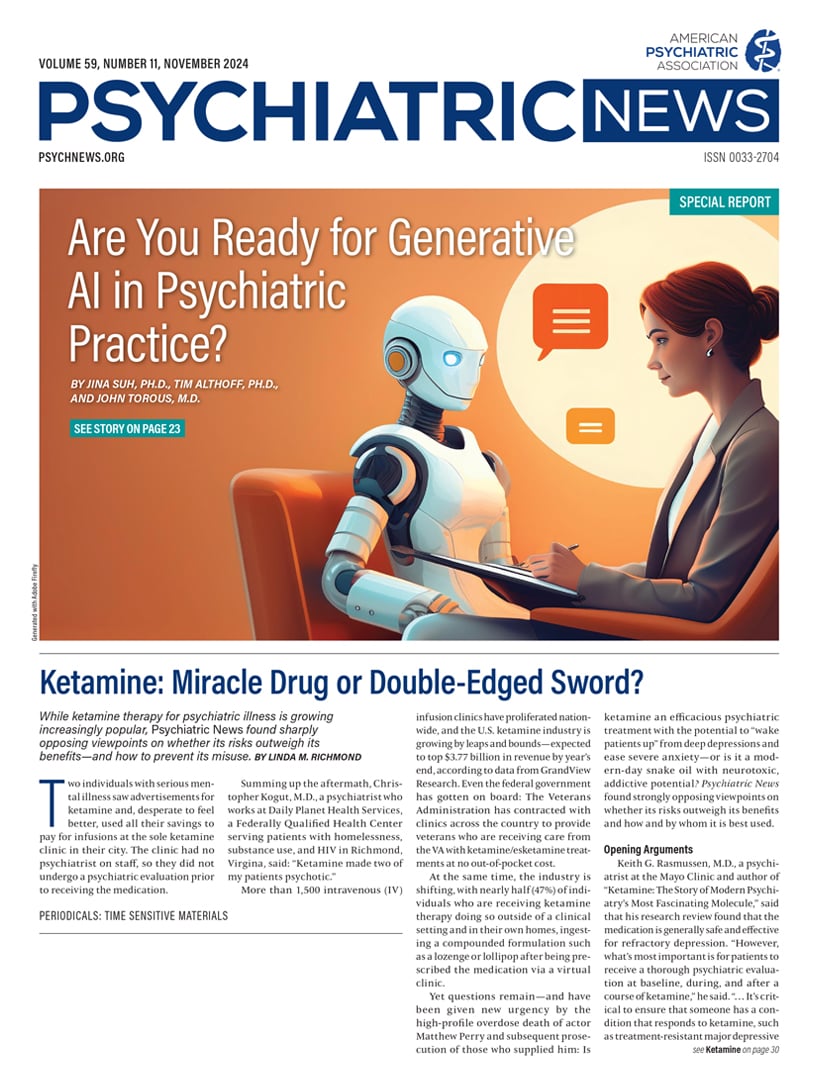After years of advocacy, mental health parity is law, and it is now time to make sure that the law is implemented and that everyone can get the treatment and support they are entitled to,” APA President-elect Theresa Miskimen, M.D., said during a panel discussion on the parity law—and the newly issued final rule governing enforcement of the law—at APA’s 2024 State Advocacy Conference in September.
Since passage of the Paul Wellstone and Pete Domenici Mental Health Parity and Addiction Equity Act in 2008, insurance companies and health plans have sought to sidestep the law’s requirements, especially through non-quantitative treatment limits (NQTLs), which can include measures such as prior-authorization requirements, medical-necessity reviews, and step-therapy requirements.
“We’re talking about a law that insurers and health plans were supposed to be following for the past 16 years,” said panelist Lisa M. Gomez, assistant secretary for employee benefits security at the U.S. Department of Labor. Also participating on the panel were Michael D. Reisman, Esq., assistant attorney general with the New York State Office of the Attorney General’s Health Care Bureau, and Lindsi Swartz, director of the Pennsylvania Insurance Department’s Bureau of Life, Accident, and Health Insurance.
Speakers emphasized the ongoing challenge of enforcing the requirement that health plans maintain accurate directories of participating psychiatrists. “We all recognize that there is a problem with inaccurate directories, but you need to show the public that this is actually happening,” Reisman said. “These directories are where patients and family members look to find help.”
Reisman described a statewide secret-shopper survey of 13 health plans in New York State undertaken by the attorney general to test the accuracy of provider networks. The results were published last December in a report titled “Inaccurate and Inadequate.”
As part of the survey, staff reviewed the plans’ directories of mental health providers, then called at least 20 providers in major cities in the state served by each plan. They attempted to schedule an appointment for an adult or child with a provider who was listed as accepting new patients.
According to the report: “The success rate for the 13 health plans surveyed ranged from zero percent to 35 percent. Of the total 396 providers called across all plans, callers were offered appointments with only 56 providers (14 percent). Therefore, 86 percent of the listed, in-network mental health providers staff called were ghosts, as they were unreachable, not in-network, or not accepting new patients.”
Miskimen noted that APA helped fund a national study addressing network adequacy—conducted by RTI—that found patients go to out-of-network providers 3.5 times as often for all behavioral health services on average compared with physical health. The study also found that all physical health office visits garner 22% more reimbursement than behavioral health visits. Patients are nine times more likely to go out of network for visits with a psychiatrist than they are for other specialist-physician visits. Average reimbursement for a physician assistant visit is 19% higher than for a psychiatrist visit.
Miskimen said the final rule approved in September will increase accountability by requiring and implementing a clear plan on how health plans are to analyze NQTLs for both behavioral and physical health benefits—and also requiring that plans take reasonable steps to reconcile the disparities. “This will require continued vigilance of all stakeholders over the coming years. This is not the final step,” she said. “It is the beginning of a new pathway to improve the ability of patients to find in-network care for mental health and substance use disorders.” ■

